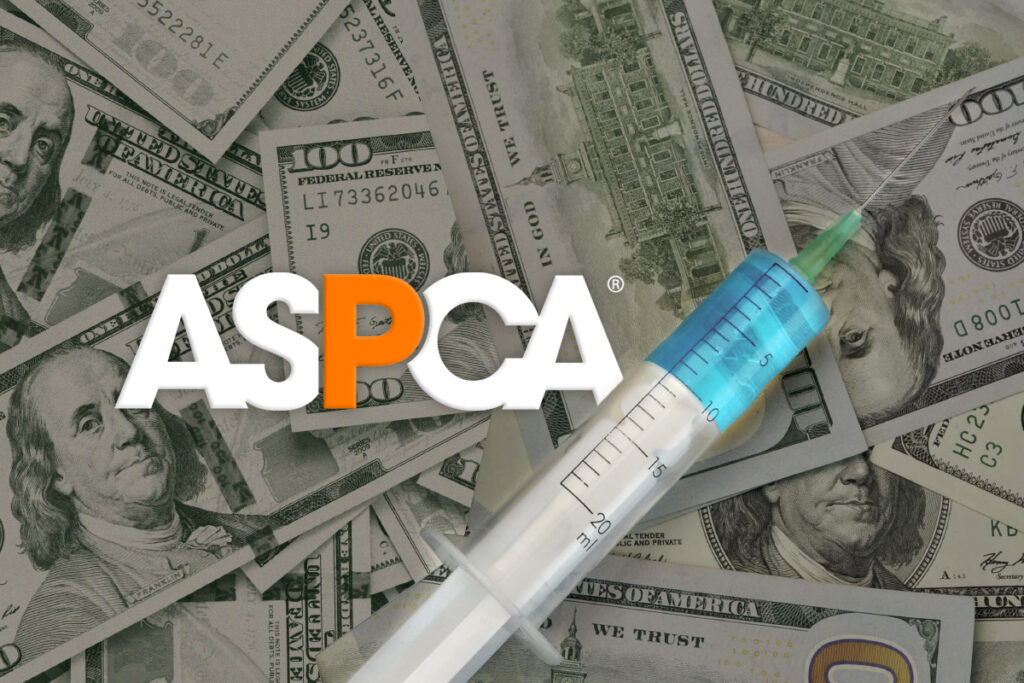ASPCA Killed Dogs at “Rehab” Center
The ASPCA runs ads on TV begging for donations, and the public has responded. In 2021, the ASPCA raised $350 million. But how many people would have given if they knew that the ASPCA kills animals?
There’s a lot people don’t know about the ASPCA. For starters, most people mistakenly think the ASPCA is affiliated with local SPCAs. It isn’t. In fact, local SPCAs get little to no money from the ASPCA. Instead, the ASPCA pays huge salaries to its executives, including nearly $1 million to CEO Matt Bershadker. The ASPCA also hoards millions of dollars in the Caribbean, according to its latest tax filings.
And now, we’ve learned that the ASPCA killed dogs at its rehab center.
The ASPCA only runs one adoption center in New York City. But it does have a satellite office in North Carolina, a “behavioral rehabilitation center” which it says is the “first facility in the United States dedicated to the rehabilitation of severely fearful dogs. Here, homeless dogs from across the country undergo months-long rehabilitation treatment to prepare them for lives in loving homes.”
The details, however, present a story that raises questions.
Last year, ASPCA employees wrote an academic paper about the effectiveness of their treatment program, which first existed in New Jersey before moving to North Carolina in 2018. The program took in dogs from shelters and rescues as well as hoarding/cruelty cases. The program only accepted physically healthy dogs that exhibited fear; aggressive dogs were not part of the program.
All of this is good at face value. In the past, groups might recommend that animals seized from a cruelty situation simply be euthanized. This happened in the Michael Vick dogfighting case, where the Humane Society of the United States told authorities to kill the Vick dogs (even while, ironically, HSUS was raising money on the promise to care for them). The Vick dogs would later be successfully rehabilitated by groups such as the Virginia Beach SPCA.
But the details of this study raise questions about whether the ASPCA killed dogs that it could have saved.
According to the ASPCA employees, “Each dog in treatment received one fifteen-minute session a day, five days a week. On the two other days of the week, dogs received only in-kennel enrichment.”
This seems really low. Only an hour and 15 minutes a week of behavioral therapy? Meanwhile, the dogs only stayed for about 3 to 3.5 months at the center. In total, they were receiving treatment for around 6 hours a month.
Meanwhile, the dogs were being evaluated weekly, and dogs that didn’t make progress were eligible to be killed.
“An Outcome Decisions Panel met each week to track animal progress and make decisions about dogs’ status in the program,” the authors wrote. “If a dog did not show positive behavior change in response to treatment to meet Adoptability Guidelines and/or continued to suffer from a poor quality of life for behavioral reasons, medical problems that arose while the dog was in treatment, or both, the Panel made the decision to humanely euthanize the dog.”
How many were killed? At the end of the program, the authors report that 61 out of 441 dogs (14%) didn’t “graduate”; almost all “non-graduates” were euthanized.
According to the figures, dogs that “graduated” had on average 78 of the 15-minute therapy sessions over three months–about 6 hours a month. Dogs that did not had an average of 86 sessions over four months–about 5 hours a month.
That’s startling. There were 61 dogs that didn’t “graduate” and they were only afforded an average of 5 hours a month of treatment.
Keep in mind, too, that these dogs were expressing fear–they were not aggressive dogs.
Couldn’t the ASPCA have tried a little harder to help the 61 “non-graduate” dogs instead of killing them?
That’s especially true because a handful of the “non-graduates” were successfully adopted out by a pet shelter instead of being killed by the ASPCA. “A small number of non-graduating dogs were requested by their shelter of origin to be returned to their shelter of origin and they were ultimately adopted,” the authors write.
If another shelter could successfully adopt out a “non-graduate,” why couldn’t the ASPCA–the richest animal rights organization in the country?
Can’t an organization that raises $300 million a year do better?
Unfortunately, large charities can put money ahead of their missions. As with the Humane Society of the United States, the ASPCA appears to have fallen into this trap. Until serious reforms are made by the organization’s leadership, animal lovers would do better to give to a local animal shelter near them.




